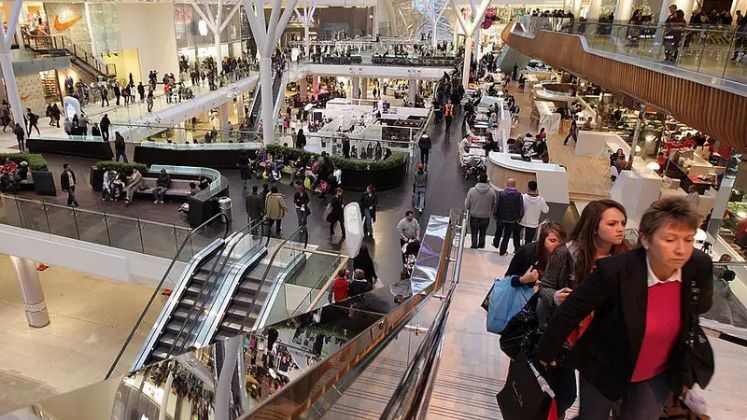Shopping
It’s not a ‘warm, fuzzy’ Thanksgiving for all: Why some honor a ‘National Day of Mourning’

US apologizes for the first time for abuses at Native schools
President Joe Biden formally apologized for the abuses committed against Native boarding school students over the past century.
For more than 50 years, Native American communities have gathered in Plymouth, Massachusetts on the fourth Thursday of November. But it isn’t to carve turkey and celebrate the Pilgrim’s first harvest.
Instead, they will march together and hear from Indigenous people from around the world for the National Day of Mourning, which commemorates a speech Frank “Wamsutta” James was supposed to deliver in 1970 at the 350-year anniversary celebration of the Mayflower‘s arrival.
“That speech was not striking some of the warm, fuzzy, come-together spirit that the folks wanted at that time, so the speech remained undelivered,” Jean-Luc Pierite, a member of the Tunica-Biloxi Tribe of Louisiana and the president of the board of directors of the North American Indian Center of Boston. He is helping to chair the march and the rally at this year’s National Day of Mourning gathering in Plymouth.
The “Suppressed Speech” by James describes how different it is to look back on what happened to his people since the arrival of the Mayflower compared to the shorter history of the white man in America.
While many of us gather to celebrate Thanksgiving Thursday, the story that many of us are taught about the origins of the holiday leaves out large swaths of Native American history and perspectives today.
“Coming together as a community for a feast and to express gratitude – that’s not something that was imported to this continent because of colonization.” Pierite said. “Indigenous peoples have had these practices going back beyond, beyond colonial contact.”
“While we are mourning some tragic history but also contemporary issues, we are also expressing gratitude for each outer and building this community space,” Pierite said.
What the Thanksgiving myth leaves out
The Plymouth colonists and the Native American Wampanoag people “shared an autumn harvest feast that is acknowledged as one of the first Thanksgiving celebrations in the colonies” in 1621, according to the History Channel. The Wampanoag have inhabited present-day Massachusetts and eastern Rhode Island for more than 12,000 years, according to the tribe.
Paula Peters, a citizen of the Mashpee Wampanoag Tribe and independent scholar of the history of the Wampanoag, said the notion that it was just a harmonious celebration is partly a myth.
“There wasn’t an invitation extended to invite the Wampanoag to come and feast with them,” Peters previously told USA TODAY. “It was really quite by accident, that there were any shared festivities at all.”
The pilgrims were celebrating their first harvest when they fired off muskets repeatedly, a form of entertainment for the settlers.
Hearing the blasts, the Wampanoag thought it was a threat. The supreme leader Massasoit Ousamequin assembled a small army of approximately 90 warriors and approached the settlement, much to the surprise of the pilgrims.
After de-escalating the situation, the pilgrims and the Wampanoag feasted together, though historical texts don’t indicate what they might have eaten besides deer hunted by the Wampanoag, as Peters writes in an introduction to “Of Plimoth Plantation.”
“The contemporary holiday perpetuates the myths of the Wampanoag and Pilgrim relations,” Peters writes in the book. “It conjures up Hallmark images of happy Natives and Pilgrims feasting on a cornucopia of corn, pies, and meats, including a fully dressed roast turkey.”
How the Thanksgiving myth took hold
The Thanksgiving story became part of a national nostalgia that stoked “Manifest Destiny” support, according to the National Museum of the American Indian‘s Native Knowledge 360° resources.
In 1863, President Abraham Lincoln declared Thanksgiving a national holiday in an attempt to foster unity in the country, according to KN360°.
But the idyllic story they were touting erased the history of the first contact tribunes before the settlers arrived, their role in helping pilgrims, and the suffering they faced after the fact.
For example, some pilgrims were aided by Indigenous men who knew English after being forced into slavery in Spain, Peteres said. Among them was Squanto, who found his way back to his home village of Patuxet, but it had been ravaged by a great plague and decaying bodies had to be moved for settlers to make the village that would one day become Plymouth.
2024 National Day of Mourning rally to focus on Palestine and environmental issues
At the National Day of Mourning, Indigenous peoples from around the world come to speak and talk about the fights they’re facing in their homes, Pierite said. They pray, they march and they rally. (People can also tune in to watch the livestream.)
“There’s absolutely…many different emotions,” he said. “It is a heavy time, but the thing of it is, is that we keep…the energy, we open in prayer, we close in prayer and we continue to lift each other up.”
This year’s event will include a Palestinian speaker, Pierite said, and organizers encourage donations to groups that support Palestinians in Gaza and the West Bank. Pierite said some folks impacted by pipelines and other energy extraction projects are expected to speak as well.
“The message from Indigenous peoples internationally has been consistent: that we need to center the development of traditional ecological knowledge, Indigenous knowledge, and move away from fossil fuel extractive economies,” Pierite said. “At this time the world needs Indigenous peoples.”
Kinsey Crowley is a trending news reporter at USA TODAY. Reach her at kcrowley@gannett.com, and follow her on X and TikTok @kinseycrowley.










